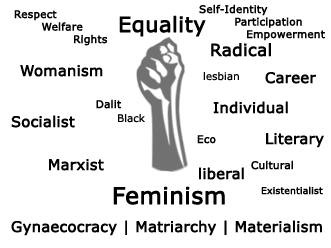Article Title :
Some Issues and Challenges to Women’s Development and Empowerment in India
1 (2017)
23-30
Feminist perspective , Empowerment , Development , Girl child , Gender violence , Globalization


The present paper looks at the history of development and empowerment and discusses the impediments to development and empowerment in India. It focuses on the three major issues in India today, namely, the attitude towards, Girl child, Gender violence and Globalization, which have to be dealt with as a priority in bringing out the development and empowerment of women in the present era. If we look back into the history about the discussions and debates related to the issue of development and empowerment, we can see some broad trends. The whole debate on development states that there were number of women who organized and mobilizing around the globe for their rights. The development planners and policy makers did not have any interaction with these groups and they considered feminism as irrelevant to development and it was viewed as a luxury for the better of women in the industrialized countries. Hence, the first stage, main stream development models gave rise to jargons like, “basic human needs”, “meeting the needs of the poorest of poor”, “growth with equity”. This phase viewed development as an administrative problem whose solution lay in transferring vast amount of resources and technological innovations from rich to poor countries. As compensation to this followed, integrating women into the development process. Education and employment as a means of income generation became indicators of women’s involvement in the development process, but again under this phase a large chunk of rural women were left behind. Today women have addressed the question of development from a feminist perspective. They have raised important questions on issues of child care, reproductive rights, violence against women, family planning, transfer of technology and rural development and given the concept of development a new meaning. If development leads only to an increase in production, then it tends to reinforce and exaggerate the imbalances and inequalities within and in between societies. Development has to be an integral process with economic, social and cultural aspects leading to the control of one’s life situation.

Today women have addressed the question of development from a feminist perspective.
The concept of 'empowerment' of women is the product of post 1975 women's movement.
For a girl discrimination begins even before birth.
The many forms of violence against women and children are to be understood as gender violence.
Globalisation has created a vast divide between the haves and the have-nots.
Agnes, F., 1980.Violence in the Family: Wife beating, Bombay, SNDT, Women’s Centre.
Ahuja, R., 1987.Crime against Women, Jaipur, Rawat Publications.
Census,1981, 1991. Government of India.
Desai, M., 1999. What should be India’s economic priorities in a globalized world? Indian Council for Research on International Economic Relations, New Delhi.
Dolan, M., 1993. Global economic transformation and less developed countries. in Global Transformation and the Third world, (eds) Robert O. Slater, Barry M.Schutz and Steven R. Dorr, Lynne Reinner Publishers Inc. Boulder, Colorado.
Gibson, A., 1994. Fortress or easy street: The impact of emerging Trade structures on globalization and developing countries.in S. Neelamegham (Ed), Competing Globally, Allied Publishers, New Delhi.
India Today, 2003. Shafalee Vasudev, Missing Girl Child, Nov. 10,19.
Kabeer, N., 1994. Reversed Realities, Verso, London.
Kelkar, G., 1991.Violence against Women in India- Perspective and Strategies. Bangkok, Asian Institute of Technology.
Mahajan, A., 1990. Instigators of wife battering. in Sooshma Sood (Ed), Violence against women,Jaipur. Arihant Publishers.
National Perspective Plan for Women, 1988. Report of the Core Group Set Up by the Department of Women and Child Development, Ministry of Human Resource Development, Government of India.
Pande, R., 2001. The Social Costs of Globalization: Restructuring Developing World Economies, Journal of Asian Women’s Studies, Kitakyushu Forum on Asian women, Japan,10,1-14.
Pande, R., 2004. The girl child in India, in Review of Women’s Studies,14(2), 149-173.
Pande, R., Bindu, K.C., Mumtaz F. and Nuzhath K., 2008. Narratives of domestic violence, Reconstructing masculinities and Feminities. in Singh, Manjit and D.P. Singh (ed), Violence- impact and intervention, New Delhi, Atlantic publishers and Distributors,121-140.
Pande, R., 2010. Gender issues in South Asia, with special reference to India, Challenges in the new Millennium. Family in Development, Hopes and Challenges, (Eds), Simon Polinder, Evert Jan Brouwer and Hank Jochesen, Just development Series, Prisma, Shaker Publishing, Netherlands, 47-58.
Pande, R., 2016. Sex Trafficking in South Asia with a Special Focus on India, Kalpaz Publication, Gyan Books, New Delhi.
Shramshakti,1988. Report of the National commission on Self Employed Women and Women in the Informal Sector, Publication Division, Government of India, Patiala House, New Delhi.
Stolcke, V.,1993. Is sex to gender what race is to ethnicity, in Teresa del Valle (ed): Gendered Anthropology, Routledge.
Towards Equality, 1974. Report on the status of women, Government of India, New Delhi.
UNDP, 1995. Human Development Report, New York,Oxford University Press.



